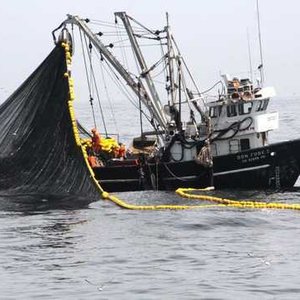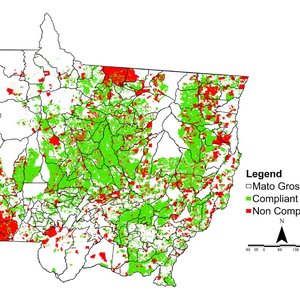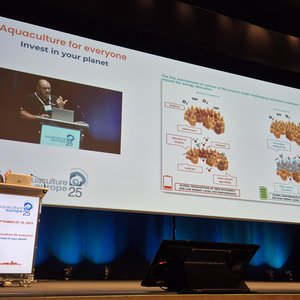Lallemand Animal Nutrition presented three new studies at Aquaculture Europe 21 supporting the role of yeast-based functional ingredients on fish's natural defenses, namely immunity and skin protection.
“Along the production cycle, many factors can destabilize the animal’s resilience and progressively develop into complex health situations,” said Eric Leclercq, Lallemand Animal Nutrition aquaculture technical support and R&D manager. “A key focus of our activity is on the promotion of the fish's natural defenses using microbial-based ingredients. This year’s contributions offer further evidence that natural microbial solutions present an ocean of opportunities to sustain fish performance and aquaculture acceptance.”
Mitigating the impact of repetitive interventions in seawater salmon
Leclercq shared an oral presentation about the potential to mitigate the impact of repetitive interventions on the health and mucosal robustness of Atlantic salmon post-smolt using functional ingredients.
The model mimicked the interventions commonly applied on commercial sea sites to control parasitic infection. The test compound combined a multi-strain yeast fraction product with a melon pulp concentrate rich in the primary antioxidant superoxide dismutase (MELOFEED). The study was performed at the University of Stirling under the guidance of Hervé Migaud and supported by Scottish Aquaculture Innovation Centre (SAIC).
The study documented a clear impact of repetitive-stress exposure across physiological and mucosal health markers. The supplemented fish showed a lower level of chronic stress and better maintenance of the skin mucosal barrier and antioxidant status under repetitive stress.
Authors concluded the dietary supplement “was able to mitigate the pernicious effects of repetitive handling and associated losses of mucosal robustness and recovery capacity. This is expected to have clear benefits at animal and farm level over the production cycle.”
Improved skin and mucosal health
Two additional studies presented confirmed the beneficial effects of the multi-strain yeast fraction product in different fish models.
Using an established mechanical skin wound model in adult zebrafish, the multi-strain yeast fractions fed continuously before dermal wounding was shown to promote early wound healing. Supplementation favored, in particular, the formation of new connective tissue at the wound bed which was associated with improved (anti)inflammatory and tissue remodeling biomarkers profile.
Another study, conducted with the University of Plymouth, confirmed the effects of the multi-strain yeast fractions on the mucosal barrier and immunity of the gill, skin and gut of salmonids (rainbow trout juveniles). Results showed the mucosal barrier defenses were improved.
In addition to the yeast product, this study also assessed the contribution of a bacterial paraprobiotic on fish mucosal health, indicating the positive potential for this new concept.

Photo caption: Zebrafish wound healing model. Dermal wound (left). The wound healing process (right). Dermal wound diameter: 1 mm.













